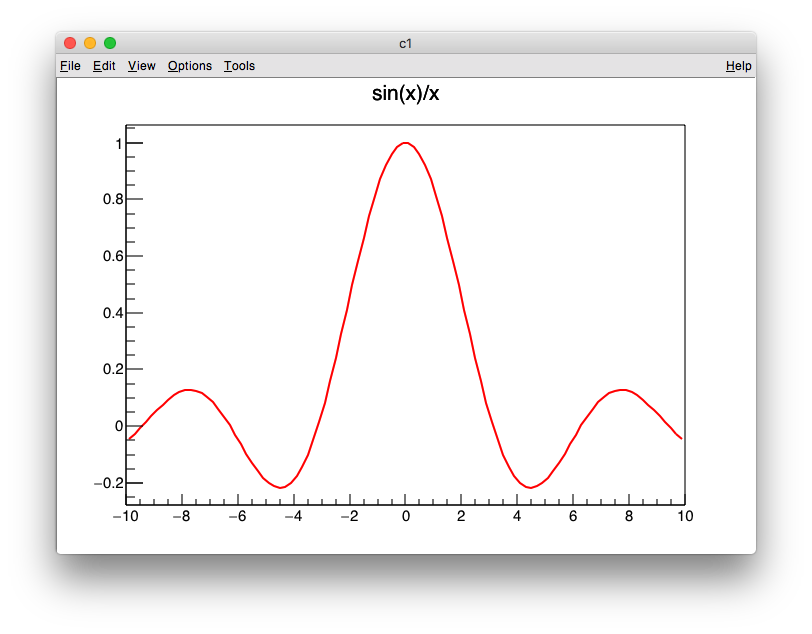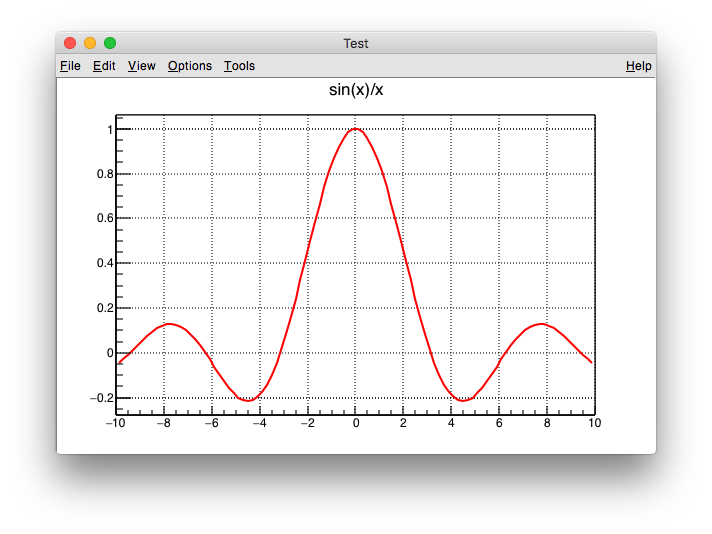ROOT has a built in C++ interpreter called Cling. One example of using Cling is:
% root root [0] TF1 f1("f1", "sin(x)/x", -10.0, 10.0) root [1] f1.Draw()
Note that the terminating “;” is not required at the end of each line.
Or you can write a ROOT macro, which is a collection of lines.
// file name = myprog1.C
void myprog1(){
TCanvas *c1 = new TCanvas("c1" ,"Test" ,0 ,0 ,600 ,400) ;
c1->SetGrid( ) ;
TF1 *f1 = new TF1("f1", "sin(x)/x", -10.0, 10.0);
f1->Draw();
c1->Update();
}
You can execute your macros either by:
% root myprog1.C // or % root root [0] .x myprog1.C
Your macros can also be compiled by adding some “dressing code”.
https://root.cern.ch/root/htmldoc/guides/primer/ROOTPrimer.html#interpretation-and-compilation
// file name = myprog2.C
//include some header files, not necessary for Cling.
#include "TApplication.h"
#include "TROOT.h"
#include "TCanvas.h"
#include "TF1.h"
using namespace std;
void myprog2() {
TCanvas *c1 = new TCanvas("c1", "Test", 0, 0, 600, 400);
c1->SetGrid();
TF1 *f1 = new TF1("f1", "sin(x)/x", -10.0, 10.0);
f1->Draw();
c1->Update();
}
void StandaloneApplication(int argc, char** argv) {
myprog2();
}
int main (int argc, char** argv) {
TApplication app("ROOT Application", &argc, argv);
StandaloneApplication(app.Argc(), app.Argv());
app.Run();
return 0;
}
% g++ -o myprog2 myprog2.C `root-config --cflags --libs` ./myprog2
Finally, you can use a set of bindings called PyROOTto interface to Python.
# file name = myprog3.py
from ROOT import TCanvas, TF1
c1=TCanvas("c1" ,"Test" ,0 ,0 ,600 ,400)
c1.SetGrid ()
f1=TF1("f1", "sin(x)/x", -10.0, 10.0)
f1.Draw()
c1.Update()
raw_input('Press <ret> to end -> ')
% python myprog3.py


